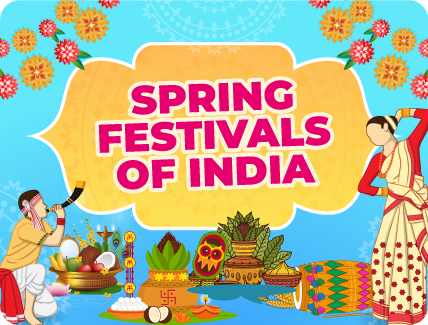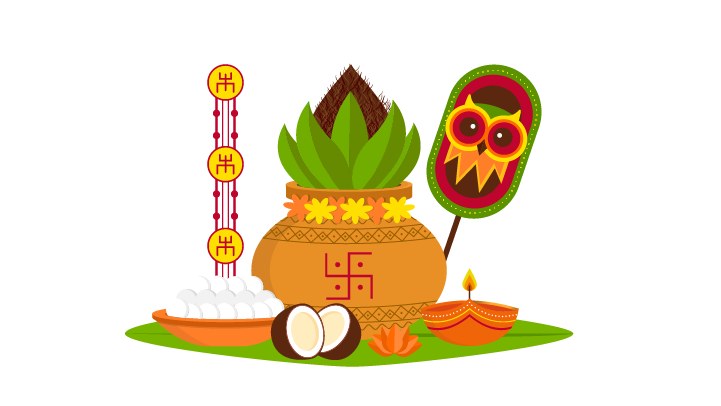

















Spring is in the air. So are many Indian harvest festivals. Let’s look at how these festivals are celebrated in various states:
Vaisakhi: It is the harvest festival of Punjab, celebrated on the first of Vaisakh, the first month of the Punjabi solar calendar. This is also when rabi (winter) crops are harvested. Farmers celebrate and express gratitude to their land during this day. Everyone takes part in the celebration by donning colourful clothes and cooking lip-smacking food such as makke di roti (flatbread made from corn), sarson ka saag (dish made of mustard leaves), gajar ka halwa (carrot-based dessert) and more. Competitions are held as people get together in various places. Processions are held through the streets where people sing hymns and songs.
Puthandu: This festival is celebrated on the first day of Chitterai, the first month of the Tamil calendar. Families begin the day by waking up to kani, the first sight of the year, that consists of flowers, fruits, gold, silver and a mirror that brings good luck. Houses spot kolams—intricate patterns drawn on the floor using rice flour near entrances. In certain parts of Tamil Nadu, children receive cash from elders. An elaborate meal consisting of dishes such as mango pachadi (a sweet mango chutney), pongal (porridge-like dish made of rice and lentils), vadai (fried snack made of lentils), sambar (dal-based vegetable curry) , sadam (rice), payasam (milk-based dessert), vegetable curry, fresh mango pickle and curd is enjoyed on this day. Families also sing devotional songs to invite prosperity and happiness into their homes.
Vishu: It is a popular spring festival celebrated in Kerala. Similar to Puthandu, a kani is arranged, an elaborate meal called sadya is prepared, and children receive vishukaineetam (cash) from elders.


Pohela Boishakh: The Bengali calendar begins with Boishakh, which coincides with the harvest season. New year is celebrated with parades, music, poetry and dance performances, and cultural programmes. Adorned in traditional attire, people exchange greetings of Nabo Barsho. On this day, farmers thank the almighty for a good harvest. Traders mark the new year by using a new accounts book called Haal Khaata.
Bohag Bihu: Bohag Bihu is the Assamese new year, which is celebrated over the course of seven days. Bihu is celebrated thrice in a year as Bohag Bihu, Kati Bihu and Magh Bihu to mark different stages of the harvesting period. Dancing to folk songs known as Bihu Geet, feasting and exchanging gifts are part of the festive tradition. On the first day of Bohag Bihu dedicated to cattle, the animals are bathed, horns and hooves are coloured and adorned with garlands. On the second day, people apply turmeric paste to their bodies before bathing. Dishes like til laru (dessert made of sesame seeds), pitha (rice dumpling), murir laru (sweets made of puffed rice), poka mithoi (rice laddu) are prepared. Gamusa (towels) are given as gifts. The third and fourth day are dedicated to household deities and handlooms respectively. On the fifth day, farm equipment is celebrated. The sixth day is dedicated to pets. On the final day, people dance to the beats of musical instruments like dhol, gogona toka, etc.